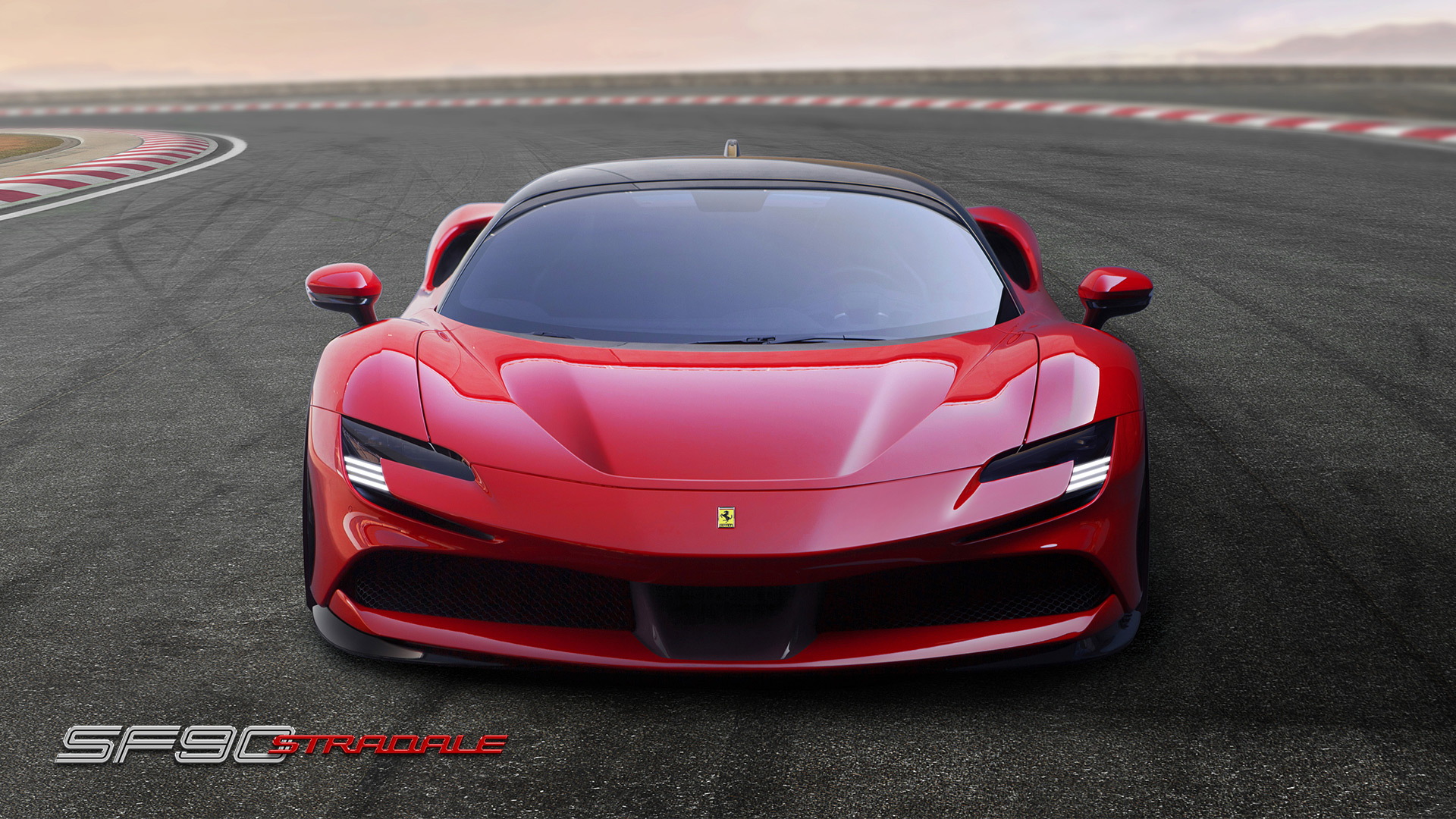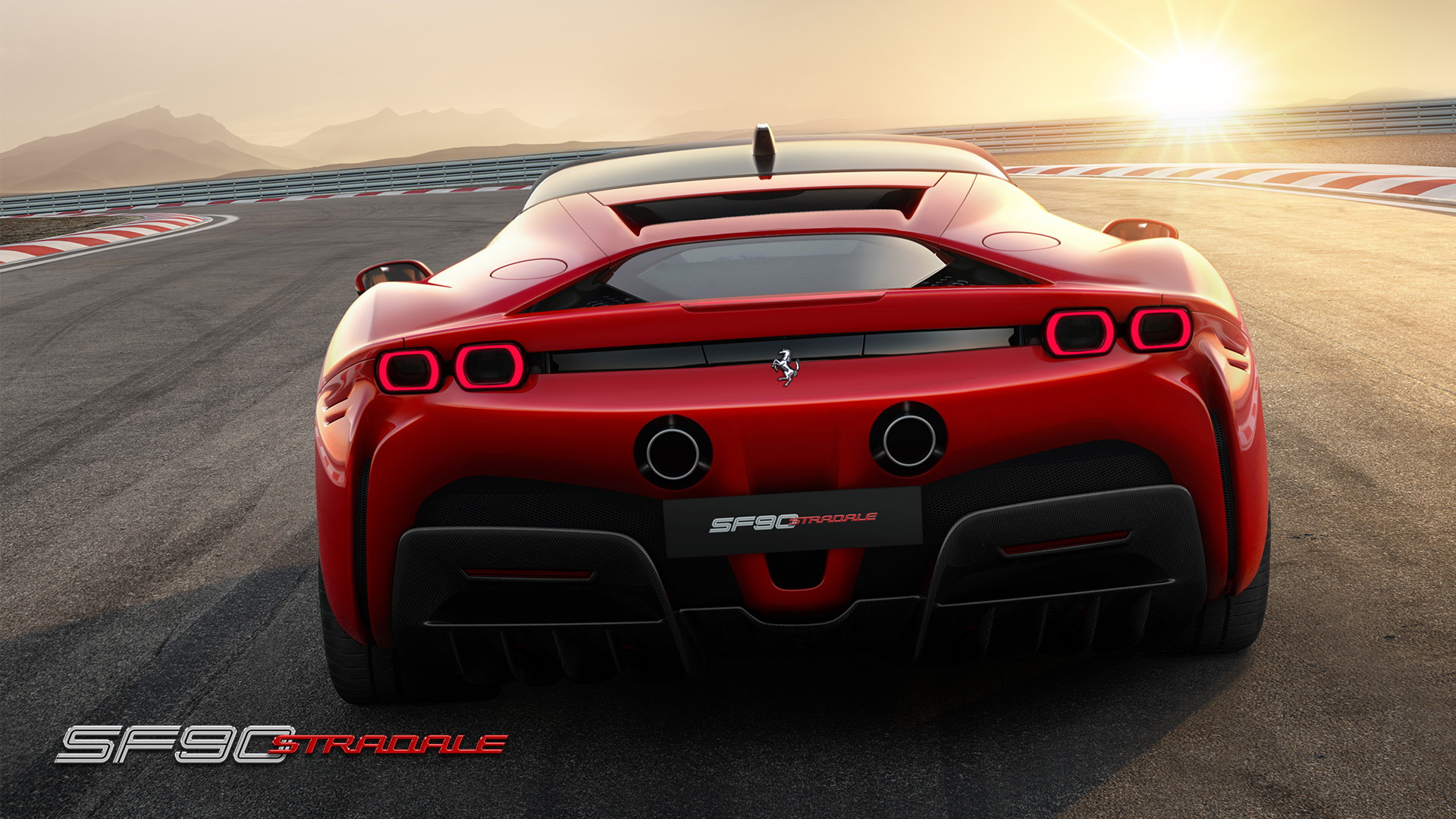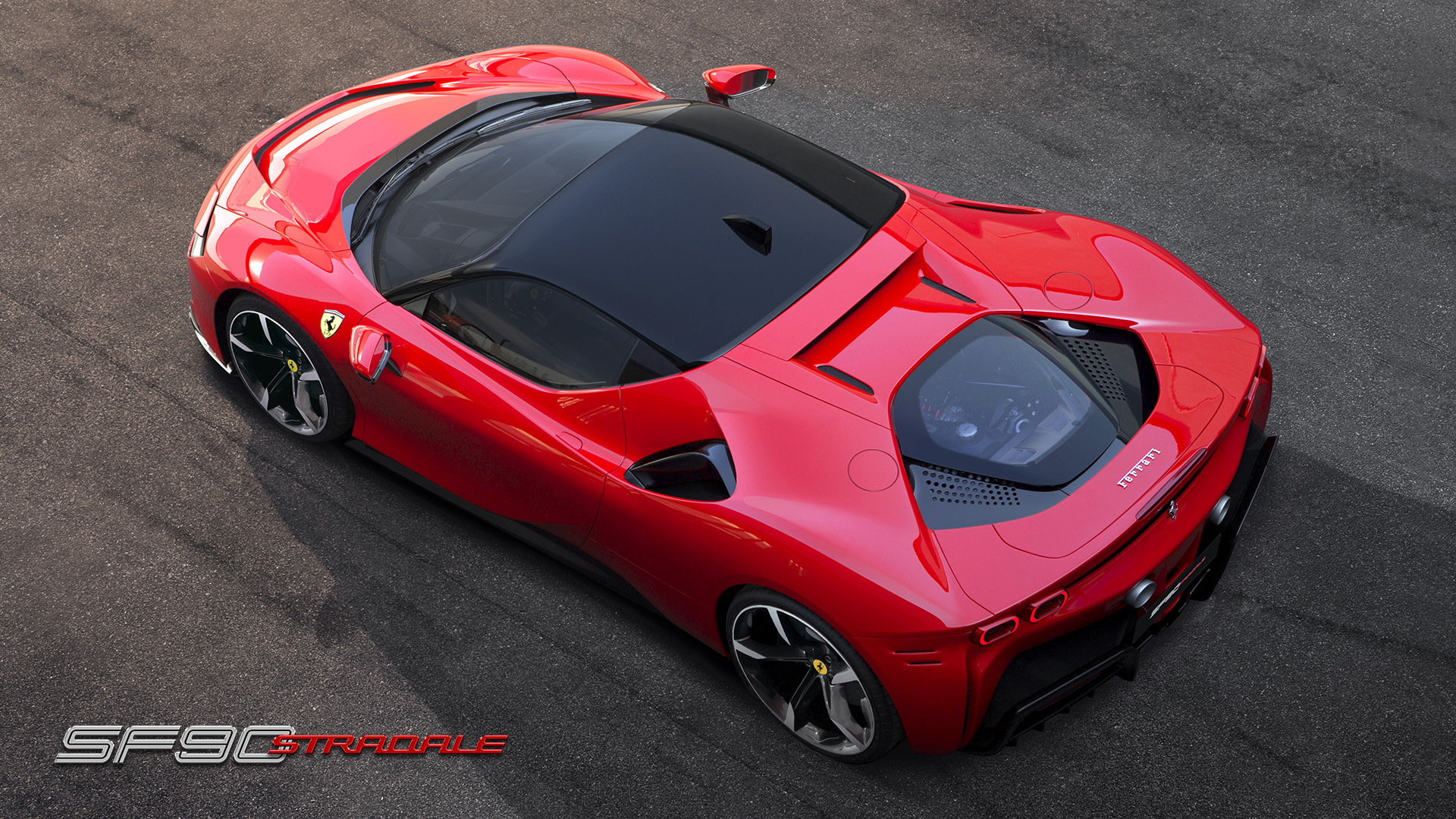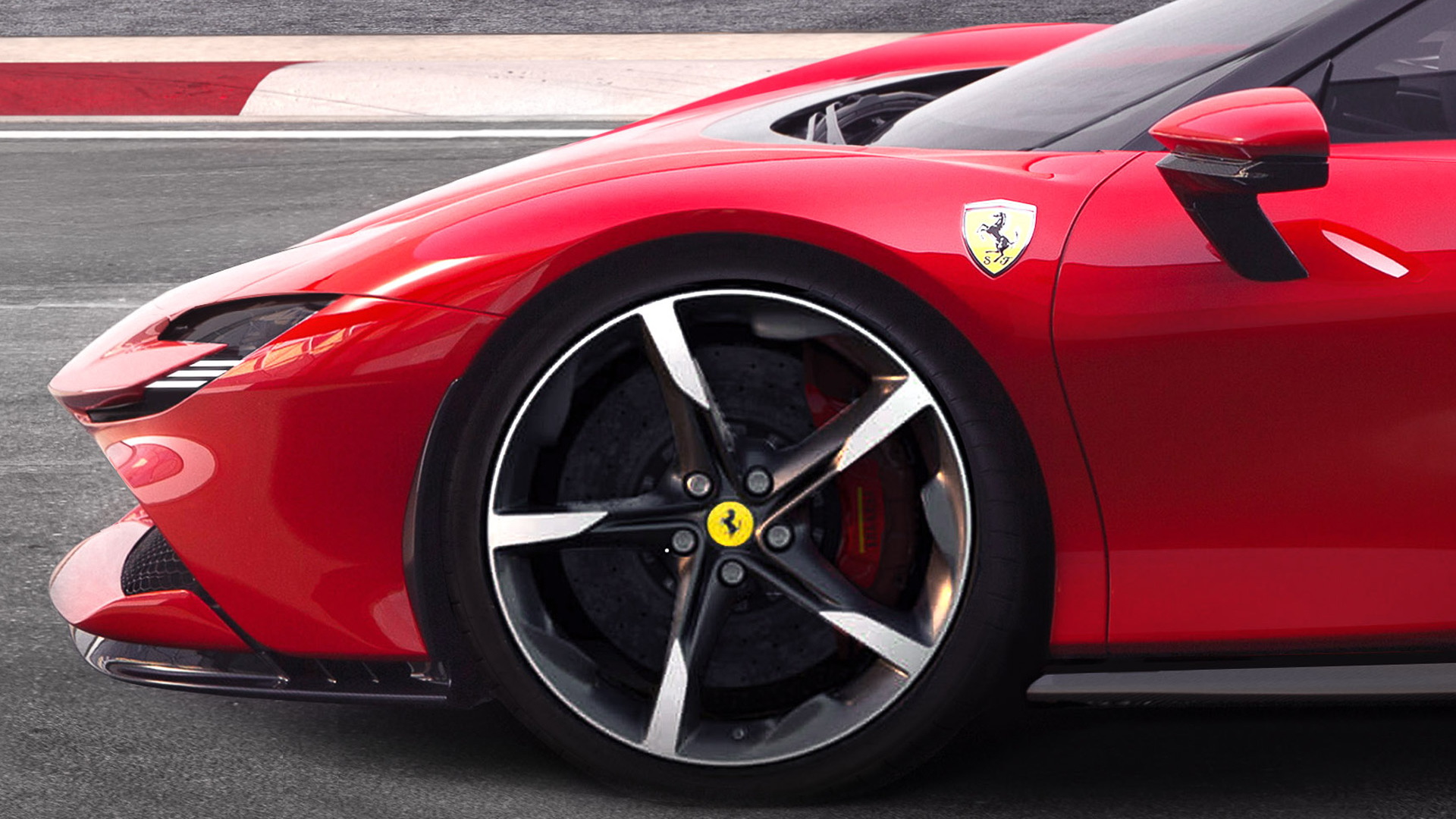Ferrari entered a new chapter on Wednesday with the launch of the SF90 Stradale as the brand's flagship. The car isn't a limited-edition successor to the LaFerrari but an expansion of the lineup, meaning it will have a normal product cycle, which for Ferrari is typically about five years.
You'll recognize the SF90 portion of the name as the same used by Ferrari's 2019 Formula 1 race car. It celebrates this year's 90th anniversary of the Scuderia Ferrari race team and also hints at the technology transfer from the F1 car to the new hypercar, hence the Stradale portion, the Italian word for “road.”
Yes, the SF90 Stradale is a technological powerhouse that includes Ferrari's first plug-in hybrid powertrain. As a nod to the iconic F40, Ferrari's newest hypercar features a fuel filler cap on either side of its engine bay, though one of these is a charging port for its battery, in this case a lithium-ion unit with a 7.9-kilowatt-hour capacity. Another nod to the past is the controls for the transmission in the center console. They resemble the gated manual design of classic Ferraris.

Ferrari SF90 Stradale
Charging the battery can be done at home or at a public charger, but the battery can also be topped up on the road via the engine or from energy recovery. Whenever the driver hits the brake, an electric motor-generator sandwiched between the engine and a new 8-speed dual-clutch transmission, the MGUK (Motor Generator Unit, Kinetic), the same name the technology uses in F1, can help slow the car and generate electricity in the process.
This motor-generator can also help the engine during high-load situations, and the electricity it generates can also be fed to two more electric motor-generators at the front axle, which also have the ability to recover energy. These front motors form a hybrid all-wheel-drive system that helps ensure the SF90 Stradale has enough traction to put all of its power down, in this case 986 horsepower.
The engine in the SF90 Stradale is an evolution of the twin-turbocharged V-8 in the F8 Tributo. Displacement is up 0.1 liters to 4.0 liters, and the intake and exhaust system was completely redesigned and now features a new, narrower cylinder head with a central injector and the adoption of a 5,000-plus-psi direct fuel-injection system. That's double the pressure of rival systems. Reworking of the engine's plumbing has also meant a reduction in overall weight thanks to less piping and the use of Inconel instead of steel for some parts, plus a lower center of gravity. Peak output from the engine is 769 hp, the highest of any Ferrari V-8, with the rest of the power coming from the electric motors.

Ferrari SF90 Stradale
Naturally, you'll need both the engine and the electric motors working for the car's maximum performance. According to Ferrari, the SF90 Stradale will accelerate to 62 mph in 2.5 seconds, reach 124 mph in 6.7 seconds, and top out at 211 mph. Ferrari also quoted a 1:19 lap time for its Fiorano test track, which is 0.7 seconds quicker than the LaFerrari's time. Not bad considering the car has a relatively hefty dry weight of 3,461 pounds.
The heft is due to the new electronics, which total close to 600 pounds. To reduce weight as much as possible, Ferrari used multi-material construction for the internal structure, including carbon fiber and various alloys as opposed to all-aluminum construction like the rest of the lineup. As a result, the SF90 Stradale structure also boasts 20-percent higher bending stiffness and 40-percent higher torsional rigidity than previous platforms without any increase in weight. Note, further weight can be saved via an available Assetto Fiorano package that adds even more carbon fiber.
As mentioned, the SF90 Stradale also debuts a new 8-speed dual-clutch transmission. Despite having one extra gear than Ferrari's previous DCT, the new unit is actually 22 pounds lighter and has a lower center of gravity thanks to clever packaging and the elimination of the reverse gear. Hitting reverse in the SF90 Stradale means only the front two electric motors are working. Furthermore, thanks to improved actuation hydraulics, total clutch fill times have been cut to 200 ms compared to the previous transmission's 300 ms.
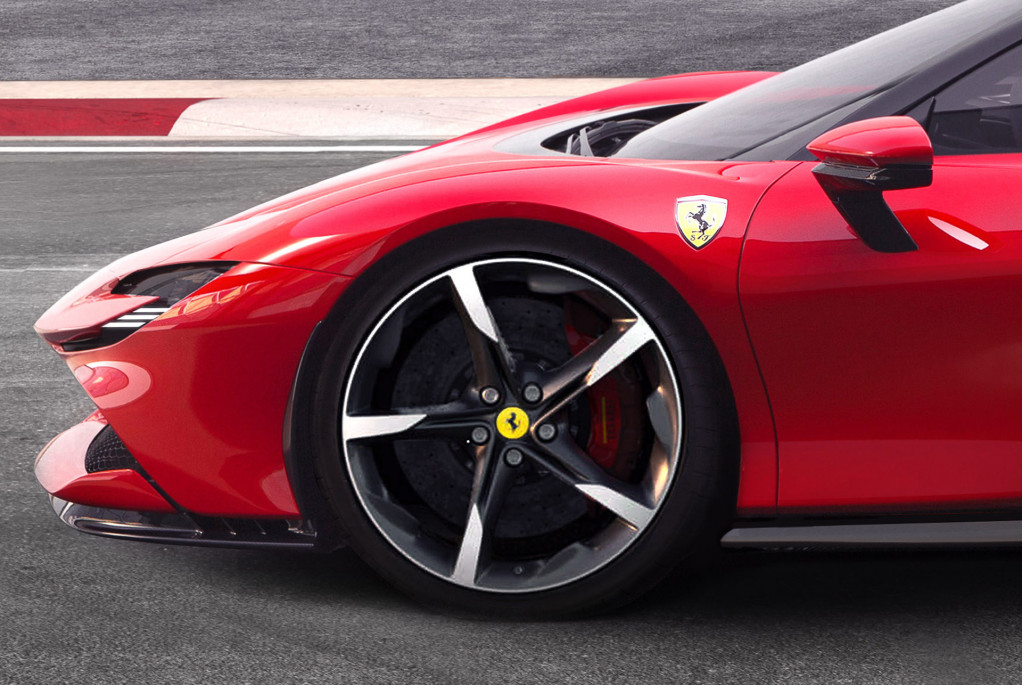
Ferrari SF90 Stradale
It's not only in reverse that the SF90 Stradale operates in electric mode. The driver can choose an eDrive mode in which the car can travel up to 15 miles with only the front two electric motors working. Top speed in this mode is limited to 84 mph, and yes, you'll have front-wheel-drive dynamics.
However, the front motors are really there to aid traction. In fact, Ferrari even calls the system the electronic cornering setup regulator, or RAC-e for short. The motors are fully integrated into the SF90 Stradale's vehicle dynamics controls and precisely control the level of torque being delivered to each of the front wheels. This electric motor-enhanced vehicle dynamics controls system is known as the eSSC (electronic Side Slip Control), and it can also vary the torque generated by the engine and brakes. For the brakes, we're looking at torque control via both conventional hydraulic brakes and the motor-generators, a process known as brake blending.
Beyond the eDrive mode, the SF90 Stradale also has a standard Hybrid mode in which all of the power sources are managed for maximum efficiency. The control logic automatically decides whether to use the engine, the motors, or both power sources. Next up is a Performance mode where the engine is always running and is either charging the battery, driving the wheels, or both. And finally there's a Qualify mode, which, as the name suggests, is designed for the time attack. Here, the motors deliver their maximum power and the engine is used exclusively to power the wheels, i.e. no charging.

Ferrari SF90 Stradale
As for the design, aerodynamics played a major role in shaping the car, with elements like the low engine cover and rear diffuser, helping to boost downforce. There's also an active element at the rear that helps to control air flow over the car, adjusting for low drag at high speeds and high downforce through corners, under braking and during changes of direction. The system, called the shut-off Gurney, relies on parameters such as speed, acceleration (lateral and longitudinal) and driver inputs, all of which are monitored hundreds of times a second. The result is as much 860 pounds of downforce at just 155 mph.
The wheels, too, feature an aerodynamic design to help extract hot air heated by the brakes and reduce turbulence. The solution are radial elements on the spokes which are equally spaced between each spoke and designed to act as wing profiles. The geometry of these profiles mean that the wheel works like a propeller. The flow exiting the wheel rim is lined up with the longitudinal flow running along the sides of the car, helping to reduce drag. The wheels measure 20 inches in diameter and feature 255/35-size tires up front and 315/30-size tires at the rear.
Moving inside the car, the instrument cluster is a new 16-inch digital screen that, together with a head-up display, provides all of the vital info to the driver. Ferrari has also moved almost all of the controls into the direct view of the driver. They include touch-compatible surfaces, one of which is a pad on the right-hand spoke that allows the driver to navigate the instrument cluster screen.
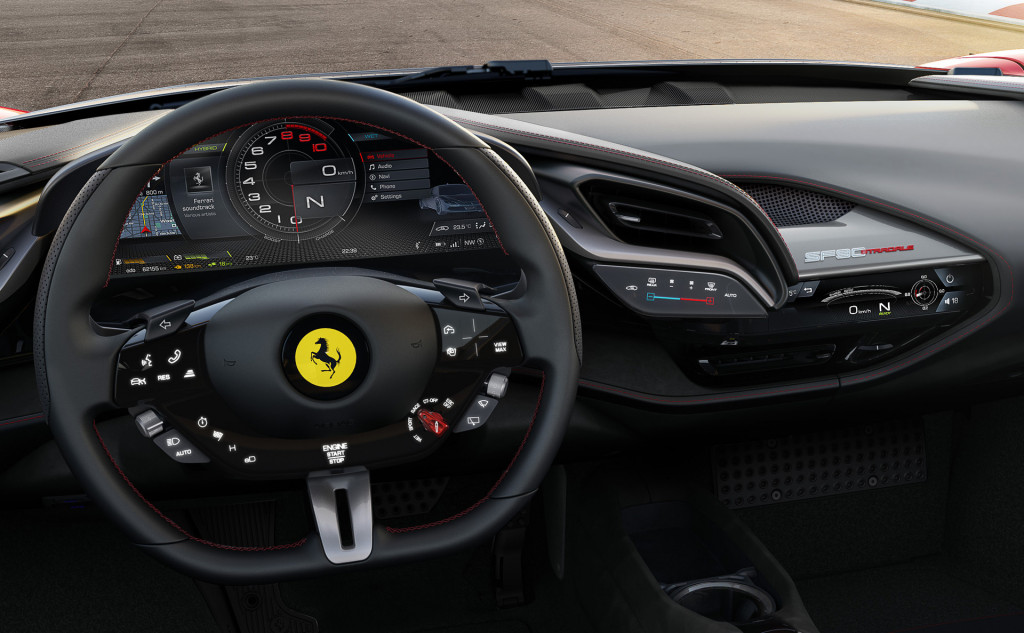
Ferrari SF90 Stradale
There are also the traditional controls including Ferrari's signature steering-wheel mounted headlight control, windscreen wipers, indicators and the Manettino, otherwise known as the driving modes selector. And finally, the SF90 Stradale also sees the debut of keyless entry and start, which will gradually be introduced across the rest of the Ferrari lineup.
The SF90 Stradale doesn't have a direct challenger just yet, though Aston Martin is cooking up the AM-RB 003. McLaren also has the slightly more powerful Speedtail, though this model is more of a high-performance grand tourer than a true hypercar. Cars like the Aston Martin Valkyrie and Mercedes-AMG One sit in a level further up, the same level we're likely to see Ferrari's eventual successor to the LaFerrari.


